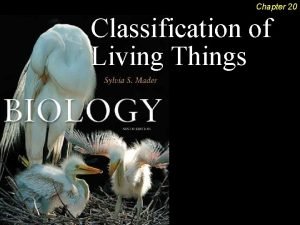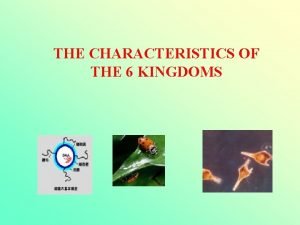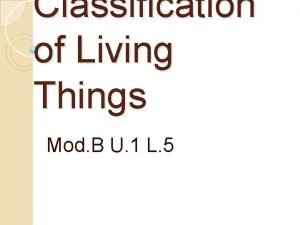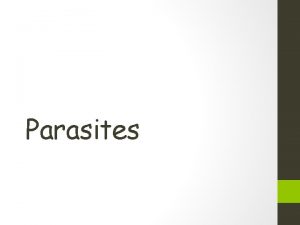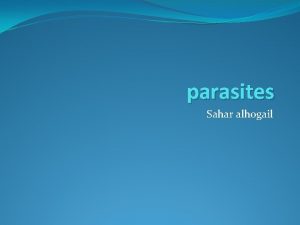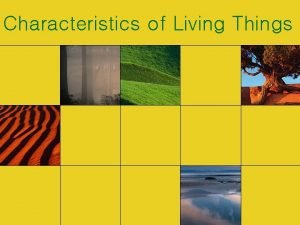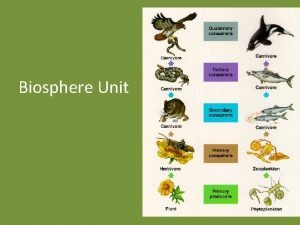PARASITES WHAT ARE PARASITES Parasites are living things











- Slides: 11

PARASITES

WHAT ARE PARASITES? • Parasites are living things that use other living things like your body - for food (nourishment) and a place to live. • You can get them from contaminated food or water, a bug bite, or sexual contact. • Parasitic diseases can cause harm to the host, but in most cases, it does not kill the host • Parasites range in size from tiny, one-celled organisms called protozoa to worms that can be seen with the naked eye without a microscope

HOW PARASITES SPREAD 1. Water • Water is the primary way parasites infect humans. 2. Other People • Oral route (most common) • Example: someone has parasites, they use the restroom, do not wash their hands afterwards, then they sit down and use the salt shaker on the restaurant’s table – they have just deposited microscopic eggs onto this object. You are the next person to sit at this table and use the salt shaker – you then lick your finger or even put your hand to your face - Ewww • Skin (cutaneous) • Parasites that enter through the skin bore directly through the skin or are introduced through the bites of infected insects (called vectors because they convey or transmit organisms that cause disease). Some parasites enter through the soles of the feet when a person walks barefoot or through the skin when a person swims or bathes in water containing the parasites.

HOW PARASITES SPREAD 3. Food • Undercooked or raw meats are a very high source of parasite infections. • Unwashed fruit and vegetables are also a big source of parasite carriers. • In some countries animal manure and human feces are used as fertilizer. This practice greatly increases the spread of parasites. • At restaurants – sick people handling food and improperly washed fruits and vegetables can be sources for parasites.

HOW PARASITES SPREAD 4. Travel • In our modern age, world travel is a way of life for many. • Travelers can sometimes bring home parasites that are uncommon to the United States.

HOW PARASITES SPREAD 5. Animals • Animals can spread diseases to humans via parasites. • By petting or grooming animals, you are picking up eggs that pass from them to us via hands, nose and mouth. • Animals may help spread parasite infected fleas and ticks • Parasite infected animal feces are concerns. This is why walking barefoot where animals have defecated is a major source of parasite infections - especially when you CAN'T SEE the actual animal feces - you just happen to be walking where they have been before.

PREVENTION • Water • Drink water from a municipal supply that has been treated • Drink unopened bottled water • Food • Eat food that is properly cooked • Wash fruits and vegetables in clean water • Hygiene • Wash your hands after using the restroom or touching infected objects, and after playing with animals and small children. • Do not walk barefoot where animals have been known to defecate.

DIAGNOSIS AND TREATMENT • Diagnosis • taking samples of blood, stool, urine, phlegm or other infected tissue and examining or sending them to a laboratory for analysis. • Treatment • Rx medication • At-home remedies

TAENIASIS (TAPEWORM) People acquire tapeworms by eating undercooked meat or freshwater fish that contain tapeworm cysts. Tapeworms in the intestine usually cause no symptoms but may cause abdominal discomfort, diarrhea, and loss of appetite. Though however if they are in the brain, larval cysts cause various symptoms, such as headaches, seizures, and confusion

BOT FLY LARVA • Botflies live in ahttp: //youtu. be/C 2 ku. GGmx 6 DU • variety of places, mostly warm and damp climates including throughout Brazil and Chile, as well as far north as the southern United States. • Only one bot fly species attacks humans, the Dermatobia hominis. Eggs are deposited in animal skin directly, or the larvae drop from the egg: the body heat of the animal induces hatching upon contact. Infestation can be caused by larvae burrowing into the skin of the host animal. They do not kill the host animal, and thus are true parasites. You can cause them to suffocate by placing smoke over your wound or tape where they then try to come to the surface and you can then extract these pests.

LYMPHATIC FILARIASIS • A parasitic and infectious tropical disease that is caused by thread-like filarial nematode worms. These worms occupy the lymphatic system, including the lymph nodes, and in chronic cases these worms lead to the disease Elephantiasis – as seen above.
 Antigentest åre
Antigentest åre Mitochondria information
Mitochondria information Venn diagram of living things and nonliving things
Venn diagram of living things and nonliving things Seven life process
Seven life process Living non living dead
Living non living dead Moss living or nonliving
Moss living or nonliving Carolus linnaeus
Carolus linnaeus Characteristic of animal
Characteristic of animal Living things
Living things Organic compounds made by living things
Organic compounds made by living things Six characteristics of living things
Six characteristics of living things 8 levels of classification
8 levels of classification






